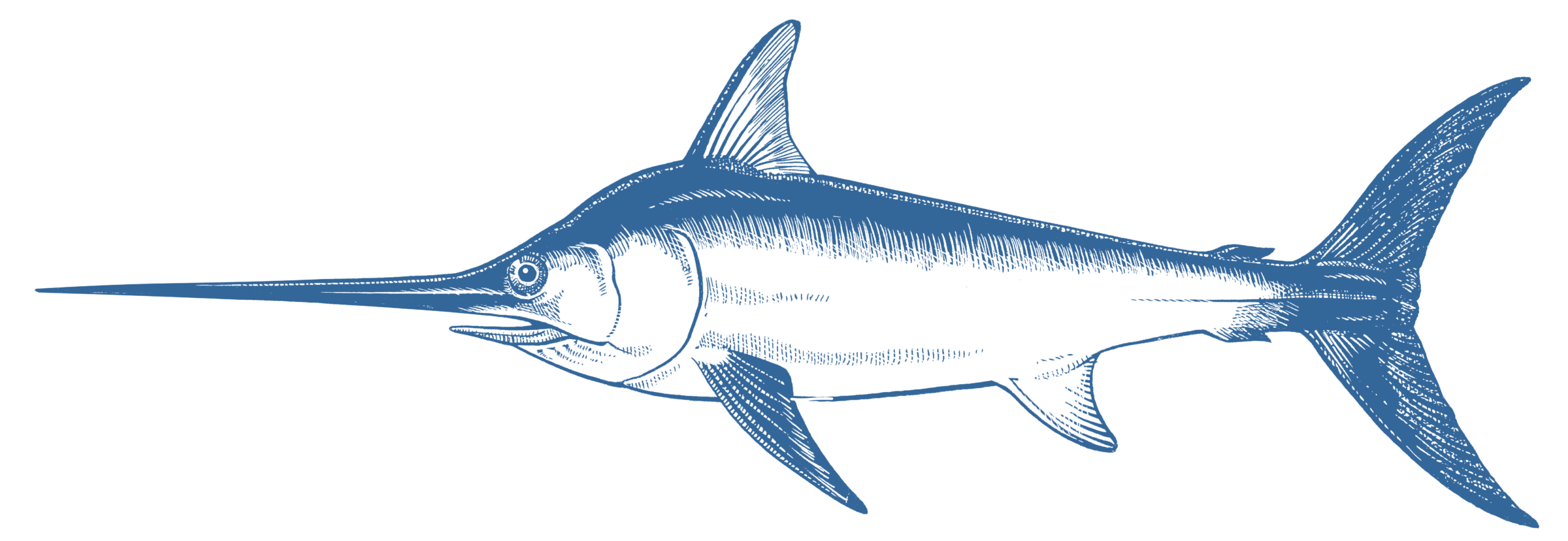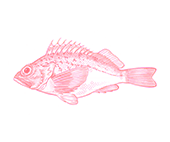




- Eat Less
Wild Caught
Region:
Eastern Commonwealth waters, Western Commonwealth waters
- Swordfish is a migratory species caught by a number of different countries, including Australia, where fisheries operate along the eastern and western coastlines.
- The swordfish population fished off Western Australia is healthy. There are uncertainties in understanding of the eastern Australian population’s health that warrant a moderate degree of concern.
- Swordfish are caught on longlines that also catch endangered wildlife, such as turtles, seabirds, whales and dolphins.
- Video monitoring of fishing boats operating in the tuna fisheries is a welcome advance, improving confidence in fishery log book reports.
- The fishery needs to do much more to protect critically endangered leatherback turtles and is likely to be red-listed in future if appropriate and immediate management action is not taken.
- Commonwealth Eastern Tuna and Billfish Fishery (ETBF: 589t in 2021) and Western Tuna and Billfish Fishery (WTBF: 96t in 2020)
Swordfish is a highly migratory species, fished throughout its range in the Pacific, Indian and Atlantic Oceans, as well as the Mediterranean Sea.
Swordfish is caught in two fisheries in Australia that mainly target tuna. Two different stocks are caught in Australian fisheries; the southwest Pacific Ocean stock is caught in the ETBF fishery and the Indian Ocean stock is caught in the WBTF. Swordfish is a highly migratory species and both Australian stocks are also caught in fisheries managed by other nations, including China, Taiwan and New Zealand.
Scientific assessments suggest the Indian ocean population fished by the WTBF is healthy. There is a small probability that the Pacific ocean population fished by the ETBF is overfished, which is of significant but not serious immediate concern. This probability is related to increasing uncertainty over the health of the stock.
Swordfish are caught using longlines in Australian waters, which also catch a range of threatened species. Because swordfish fishing usually occurs at night, there is a lower expected impact on seabirds than in other longline fishing targeting tunas. Because swordfish longlines are often deployed nearer to the ocean surface than in tuna fishing, they can have a higher impact on turtles. Independent Video monitoring across the fishing fleet was rolled out in 2015. This welcome progress provides confidence in reporting of wildlife affected by the fishery.
However, video monitoring has identified that fishers were significantly under-reporting how much endangered wildlife was killed in the past, which means that the impact of this fishery is substantially higher than previously thought. Since cameras have been installed on boats, the number of turtles, seabirds, whales and dolphins recorded as caught has significantly increased.
Despite this, most current management arrangements for the ecological risks of the fishery to endangered species is based on unreliable information collected before the implementation of cameras, though there is now seven years of reliable, recent data available to the fishery. This does not represent sustainable management, and will result in the red-listing of this fishery in future if not urgently addressed.
The catch of turtles in particular has increased over the past decade. From 2018-2021, an average of 122 turtles were caught per year in the ETBF, compared to the 4-16 that were reported as caught annually in the three years before video monitoring was mandated on the fishing vessels. In previous years, a ‘trigger limit’ was in place which required fishery managers to take action if the rate of turtle catch exceeded a certain level. This trigger limit has since been removed, which means there are no measures in place to cap the number of turtles caught in the tuna fishery. The relatively very low level of fishing activity in the WTBF in recent years significantly reduces the risk that fishery poses to threatened and endangered bycatch species.
Of particular concern; the ETBF has reported bycatch of between 20-68 critically endangered leatherback turtles per year since 2018. There are only 1000 mature nesters thought to be left in the population impacted by the ETBF, and it is declining at around 6% annually. For context, and demonstrating adequate management, a US-managed longline fishery that impacts the same leatherback turtle population is closed when yearly bycatch reaches 16 leatherbacks. If not for lower leatherback catch since 2020, the fishery was likely to have been red-listed. Immediate implementation of measures to reduce leatherback turtle bycatch to safe levels is required to avoid a red-listing in future.
In contrast, better protection arrangements and obligations on the ETBF to protect seabirds have resulted in additional management that should effectively reduce the impact of the fishery. This is welcome.
Turtles, whales, dolphins and seabirds are at risk from multiple threats, including fishing. Given the small scale of the Australian tuna fishery relative to international tuna fisheries, it is unlikely that this fishery is the major driver of on-going population declines in these species of endangered wildlife.
Commonwealth marine parks were established in 2018, but in a form significantly delayed and weakened following sustained Australian tuna fishing industry lobbying. As such they confer only a fraction of the protection for threatened and endangered species of original government proposals.


